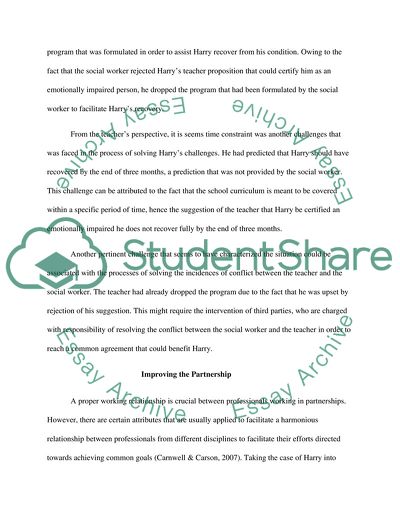Cite this document
(Synergy between Professionals in Schools and Institutions of Social Essay, n.d.)
Synergy between Professionals in Schools and Institutions of Social Essay. https://studentshare.org/social-science/1827127-bserving-working-partnership-between-professionals-social-services-and-schools-social-worker-and-teacher-challenges-theories-and-effective-pratice
Synergy between Professionals in Schools and Institutions of Social Essay. https://studentshare.org/social-science/1827127-bserving-working-partnership-between-professionals-social-services-and-schools-social-worker-and-teacher-challenges-theories-and-effective-pratice
(Synergy Between Professionals in Schools and Institutions of Social Essay)
Synergy Between Professionals in Schools and Institutions of Social Essay. https://studentshare.org/social-science/1827127-bserving-working-partnership-between-professionals-social-services-and-schools-social-worker-and-teacher-challenges-theories-and-effective-pratice.
Synergy Between Professionals in Schools and Institutions of Social Essay. https://studentshare.org/social-science/1827127-bserving-working-partnership-between-professionals-social-services-and-schools-social-worker-and-teacher-challenges-theories-and-effective-pratice.
“Synergy Between Professionals in Schools and Institutions of Social Essay”. https://studentshare.org/social-science/1827127-bserving-working-partnership-between-professionals-social-services-and-schools-social-worker-and-teacher-challenges-theories-and-effective-pratice.


